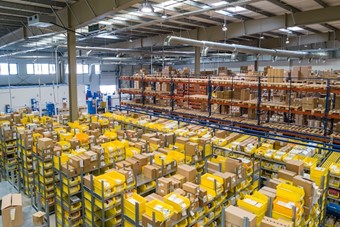
A seasonal audit may feel routine, but one of the earliest steps many teams take involves consulting resources like Global Industrial reviews to understand how operational gaps align with broader supply chain standards. This initial reference helps frame expectations around accuracy, safety, and efficiency, creating a clear baseline for assessing how well current inventory workflows support seasonal demand cycles.
A seasonal warehouse inventory audit is no longer just an administrative reset; it determines how effectively a warehouse can absorb demand spikes, manage shrinkage, strengthen forecasting models, and build realistic action plans for the upcoming quarter. A well-designed approach also prevents the errors most teams overlook: mismatched digital records, outdated slotting maps, mislabeled returns, or slow-moving items that quietly drag down productivity. As operations become more dependent on data integrity, this type of audit acts as an anchor for accuracy and stronger decision-making.
Why Seasonal Audits Matter More Than Ever
Most facilities already perform annual or quarterly checks, but a seasonal warehouse inventory audit provides sharper insight. It highlights how real-world demand patterns influence operational accuracy during peak periods. Seasonal audits help uncover:
- Inventory distortion tied to holiday surges
- SKUs that performed below forecast
- Overstock created by misaligned purchasing
- Understock triggered by vendor delays
- Bottlenecks that affected picking or replenishment
Increased reliance on industrial supply chain management systems allows a seasonal warehouse inventory audit to go beyond basic counting. It improves visibility of workflow design, material handling efficiency, and whether current capacity supports upcoming sales cycles.
Step 1: Begin With a Systems Integrity Check
Before any physical count, a Seasonal Warehouse Inventory Audit begins with a systems integrity evaluation. This step stabilizes the audit by ensuring the digital framework of the warehouse is capable of holding accurate data.
Key areas to assess:
- WMS rules for picking, putaway, and replenishment
- User access accuracy during seasonal staffing changes
- Integration points with ERP, e-commerce, and shipping platforms
- SKU master data, including dimensions and pack sizes
Many teams skip this stage and go straight to counting, creating inflated discrepancies. Confirming WMS health ensures that results from the Seasonal Warehouse Inventory Audit represent operational reality rather than system errors.
Step 2: Zone Mapping and Slotting Review
As seasonal patterns shift inventory velocity, a seasonal warehouse inventory audit becomes the ideal time to evaluate slotting choices using data from industrial supply chain management analytics.
Teams should check:
- SKUs that shifted from slow- to high-velocity
- Congestion points that slowed pick paths
- Rack positions that no longer match velocity
- Seasonal SKUs stored too far from packing
- Overstock areas requiring reallocation
Subtle inefficiencies, like U-turn-heavy pick routes or mixed-SKU bins, are often missed without a structured audit.
Step 3: Conduct a Blind Physical Count
A blind count is essential within a seasonal warehouse inventory audit, as it removes confirmation bias by preventing counters from seeing expected system quantities.
For accurate blind counting:
- Divide zones by complexity
- Assign experienced staff to bulk or dense SKU zones
- Use two-person verification for high-value items
- Rotate teams to reduce familiarity bias
Variation analysis afterward highlights risks linked to high-velocity SKUs, multi-pack units, and seasonal fluctuation patterns.
Step 4: Inspect Packaging, Labeling, and Storage Integrity
A seasonal warehouse inventory audit typically exposes packaging wear and storage inconsistencies caused by seasonal spikes. Busy seasons lead to rushed receiving and faster-paced picking, which amplify small errors.
Teams should look for:
- Faded or torn labels
- Mixed SKUs placed in the same bin
- Damaged pallets or compromised cartons
- Incorrect temperature or humidity storage
- Expired or near-expiry products
Packaging integrity issues are among the top contributors to shrinkage and unnecessary returns.
Step 5: Review Handling Equipment and Safety Infrastructure
Seasonal demand places heavy stress on warehouse equipment. Integrating this step into a seasonal warehouse inventory audit offers a clearer picture of equipment readiness for the next cycle.
Key checkpoints include:
- Forklift and pallet jack condition
- Battery performance and charge cycles
- Conveyor and sorter alignment
- Rack stability and correct weight distribution
- Safety signage and visibility
This step ensures the operational environment matches seasonal throughput requirements.
Step 6: Analyze Seasonal Return Patterns and Reverse Logistics
Seasonal returns surge after holidays, promotions, or clearance cycles. A thorough seasonal warehouse inventory audit examines how returns impact inventory accuracy and workflow stability.
Focus areas include:
- Damage-related return patterns
- Vendor-related defects
- Mislabeling or receiving errors
- Return processing timelines
- Item flow across holding zones
These insights recalibrate purchasing, supplier communication, and demand forecasting.
Step 7: Establish a Post-Audit Action Plan
The effectiveness of a seasonal warehouse inventory audit depends on the quality of post-audit execution. Turning insights into operational adjustments strengthens stability for the next demand cycle.
A strong plan includes:
- Root-cause analysis of discrepancies
- Updated slotting maps based on velocity
- Labor allocation adjustments for peak periods
- Supplier follow-ups regarding packaging or labeling errors
- WMS rule improvements
- Purchasing adjustments informed by seasonal data
This stage transforms raw audit results into actionable improvements.
What Most Teams Miss (Even With a Good Audit)
Even well-managed teams overlook issues like
- Inactive SKUs occupying prime locations
- Phantom inventory caused by mis-scanned units
- Shrinkage patterns hidden in bulk or mezzanine zones
- Error spikes tied to shift changes
- Outsourcing-related discrepancies during seasonal hiring
A seasonal warehouse inventory audit reveals these patterns before they accumulate into long-term inefficiencies.
Final Thoughts
A seasonal warehouse inventory audit is far more than a counting exercise; it reflects a warehouse’s operational maturity. It sharpens forecasting, strengthens inventory accuracy, reveals capacity constraints, and supports peak-ready performance. Facilities that make this type of audit routine gain tighter control over data quality, workflow efficiency, and overall resilience throughout every season.



